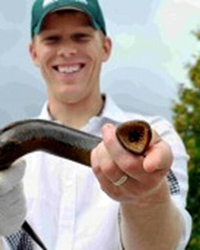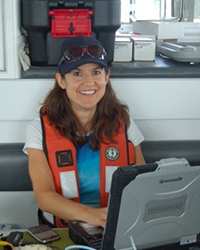Development of Chemical Resistance
Principal Investigator(s): Dr. Mark Christie

Researchers

Mark Christie, Associate Professor
Purdue Biological Sciences & FNR

Nicholas Johnson, Director, USGS Hammond Bay Biological Station, MI

Erin Dunlop, Research Scientist
Ministry of Natural Resources, Ontario, Canada
Research Objectives
Sea lamprey (Petromyzon marinus) have been chemically controlled in the Great Lakes with the lampricide 3-trifluoromethyl-4-nitrophenol (TFM) for over 60 years. Recent experimental and theoretical work have indicated that 1. sea lamprey in Lake Michigan may be in the incipient stages of evolving resistance to TFM, 2. genes associated with resistance have rapidly increased in frequency in Lake Michigan (e.g., ATP synthase), and 3. the projected system-specific timeframe for resistant individuals to increase in frequency is 40-80 years after the onset of TFM treatment. Together these results warrant large-scale genotyping and phenotyping efforts to develop a cost-effective SNP panel for resistance monitoring. We hypothesize that resistance will evolve with the current selection intensity and treatment strategies, but that there is time to prevent resistance with appropriate changes to control measures (e.g., monitoring) that do not need to limit TFM application.
- Resistance to pesticides can evolve rapidly
- Data suggest incipient evolving resistance to TFM in sea lamprey
- We are developing tools for monitoring resistance in sea lamprey


